This is my last post about my trip before returning to posts about managing the site and baking, I promise! -Floyd
As far as I can recall, we ate Polish food exclusive on this trip. Not out of necessity, mind you: at least in cities like Warszawa and Kraków you can dine on sushi, burgers, Italian food, phó, pretty much anything you like now. Chains like Starbucks, McDonalds, Hard Rock Cafe, and KFC are about as common as in the rest of Europe. We didn’t take this trip to eat American or Italian or Japanese though, we went to eat Polish.
Polish food is very good. My wife’s comment was “When I came here when I was twenty, it was the night life and the drinking that were the big temptations. This time, it is the food!” I agree and could go on and on about the cuisine there, though I’m going to limit myself to this one (admittedly fairly long) post, first discussing the meals and then some particular foods of interest.
The spices in Polish cuisine are mild. Very mild: think dill and marjoram, often with cream.
One of the strongest flavours? Smoke.
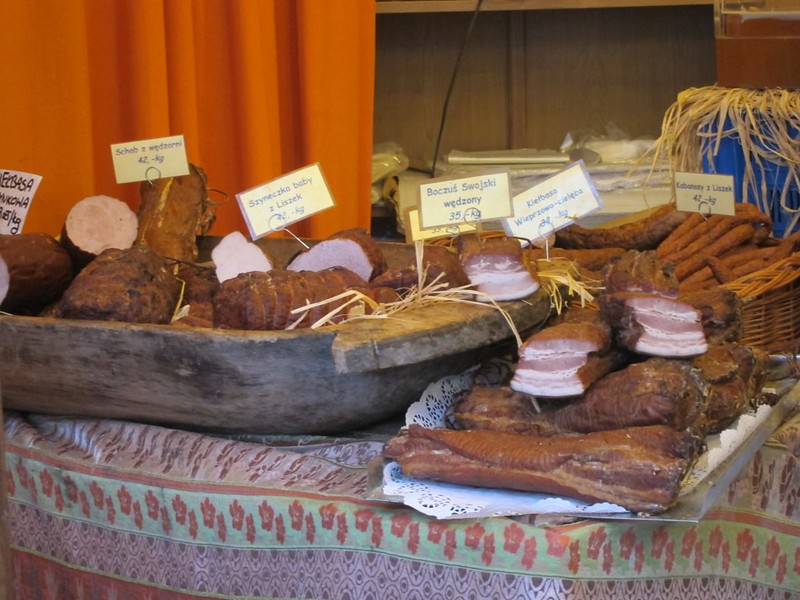
Curing, pickling, and fermenting meats and vegetables was an important way of preserving food in the days before reliable refrigeration and still plays an important part in many of the traditional dishes.

And, yes, to get the question out of the way, the kełbasa (sausage) really is all that.
The first meal of the day is śniadania.

A traditional spread at śniadania is likely to include bułki or chleb (rolls or bread), szinka (ham) and wędliny (cold cuts), cottage or farmers cheeses - sometimes with radishes and chives mixed in or to be eaten with it on bread, sliced pomidory and ogórki (tomatos and cucumbers), masło (butter) and ser (cheese - usually a white or yellow one - the familiar orange cheddar that Americans usually eat is still a rare sight there). Herbata (tea) is drunk more often than coffee, with lemon and honey or sugar rather than milk. Soft boiled eggs, scrambled eggs, or omelet with chopped ham or kełbasa are also not uncommon. Another common dish is parówki (a kind of hot dog - usually pork or chicken), sometimes served with cheese.
The largest meal of the day, obiad, is eaten in the early afternoon. At my grandmother-in-law’s house, obiad was usually a three course affair. First soup such as barszcz (based on beets), zurek (a rye sourdough soup pictured below that I’ve mentioned previously and which I’m trying again to make at home), zupa pomidorowy (tomato soup), or a chicken broth.

The main dish was usually a meat + starch + vegetables affair, something like some sort of schab (pork roast) or kotlety (cutlets) with ziemniaki (potatoes) or kluski (either noodles or dumplings depending on the type) or ryż (rice), and a chopped salad or some type of cooked/fermented mushrooms or cabbage.
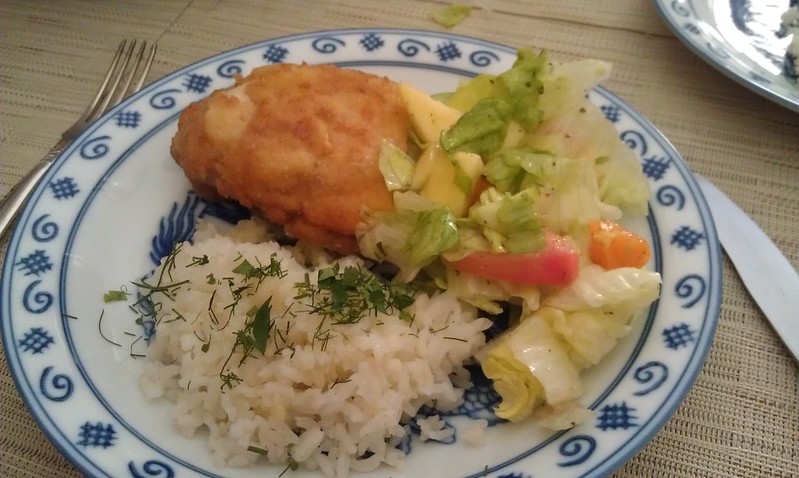
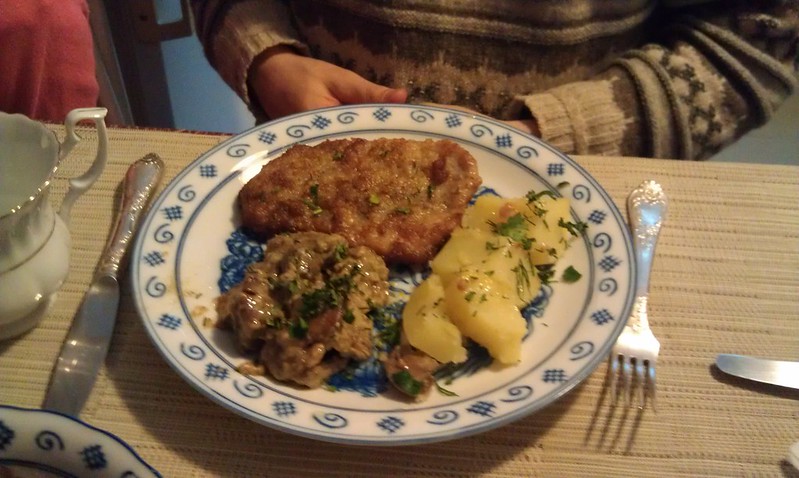
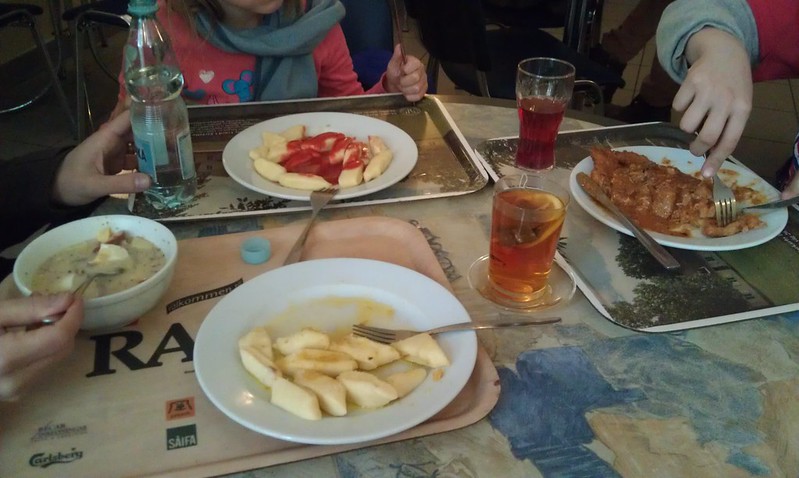
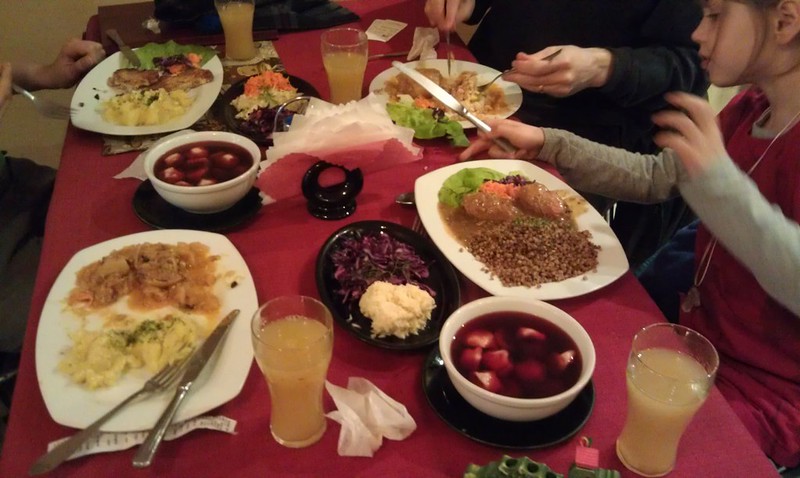
Another common meal is to have one of many kinds of pierogi. Pierogi come stuffed with meat, potatoes, mushrooms, cheese, cabbage, or even fruits and berries.
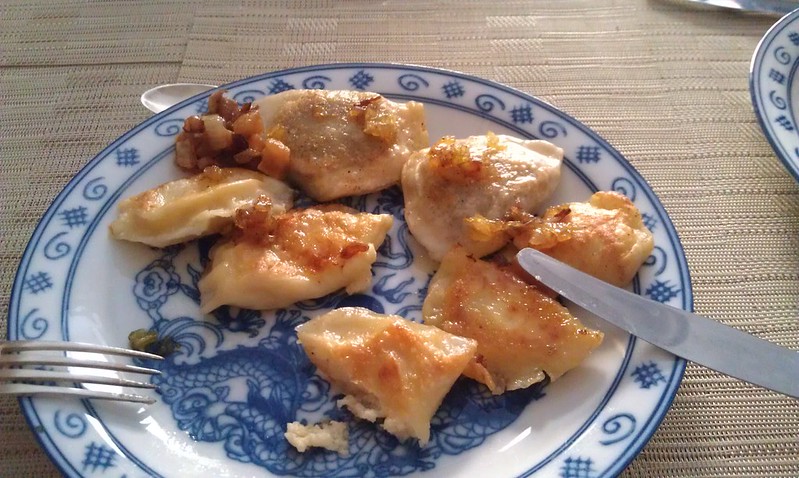
And no meal was complete without dessert, typically some sort of fruit in gelatin, a slice of cake, and more herbata.
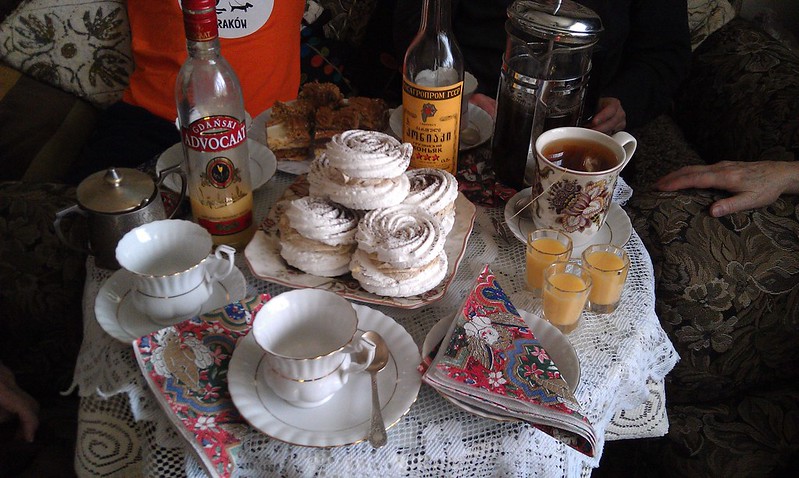
To wrap it all up, almost every obiad was closed with some sort of sweet liqueur or flavoured vodka, often times homemade.
After that we’d often try to go to go back out and do something, but usually the most I could manage was to read a book or watch TV for a bit and try not to fall asleep. Light eating it is not!
The evening meal, kolacja, is typically smaller and happens later in the evening than in North America. More bread and cold cuts, for example, or some slices of whatever roast was made for obiad. Just enough to tide you over until morning.
Not everyone eats like this, of course. I’m sure busy folks who work in offices eat desk lunches the way many of the rest of us do. When we asked a waiter who we were chatting with what he had for śniadania, he told us “today, cereal.”
A few specific items worth mentioning:
Pączki

As I blogged about earlier, one of the things I most anticipated eating on this trip were pączki, the jelly doughnut-like treats found in Polish bakeries around Easter.

I tried four or five different bakery’s versions of them. The worst were simply plain, not unlike grocery store jelly doughnuts. The best, either those from A. Blikle Bakery in Warszawa or one of the bakeries I tried near the rynek in Kraków, were outstanding: sweet but not too sweet, soft, rich, and distinctly floral from the rose petal jam filling. They are definitely something you should try if you have an opportunity to.
Ciasto i sernik
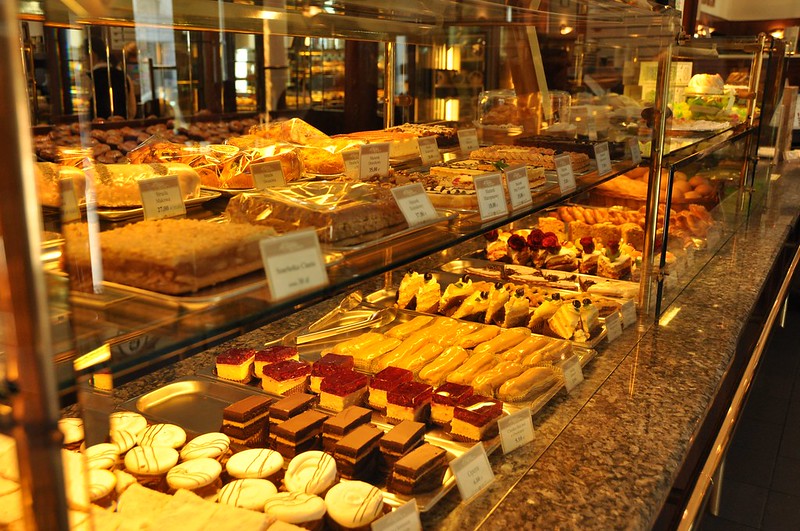
Polish cakes and pastries are excellent. Napoleonki (aka mille feuille) and Wuzetki (usually marked "W-Z") are two of the best known, and there are innumerable delicous varieties of cheesecake (sernik) to be tasted. If you have an opportunity to visit, be sure to stop when you see a cukiernia, which is like a Polish pâtisserie. You won’t regret it!
Naleśniki
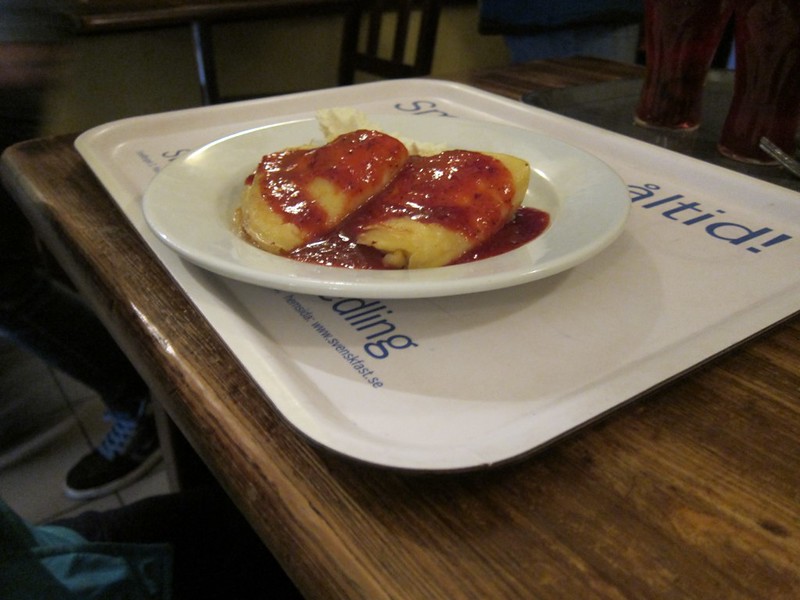
Naleśniki are the Polish equivalent of crêpes. Like crêpes you can order them for any meal and will find them served sweet or savory, containing sweet white cheese, berries, ham, or mushrooms. They are very good. I'm already trying my hand at making them at home, using sweetened ricotta cheese to try to recreate the white cheese that the fruit ones are usually stuffed with.
Chleb
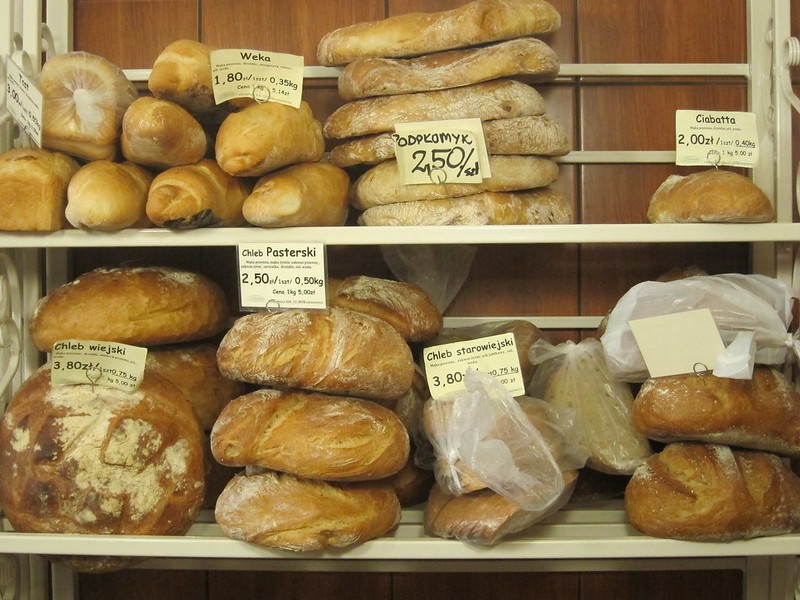

The bread (chleb) we had in Poland was consistently fresh and consistently good, similar to the breads I’ve had in other Northern and Eastern European countries.
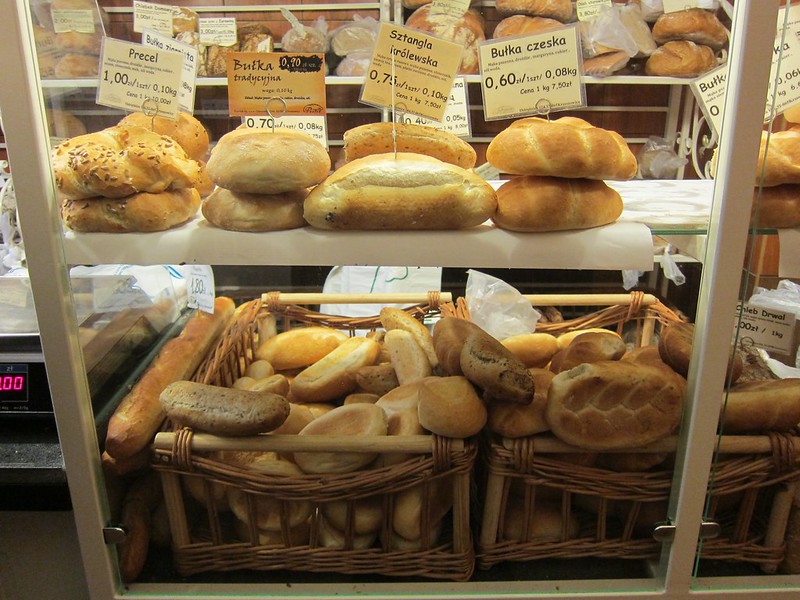
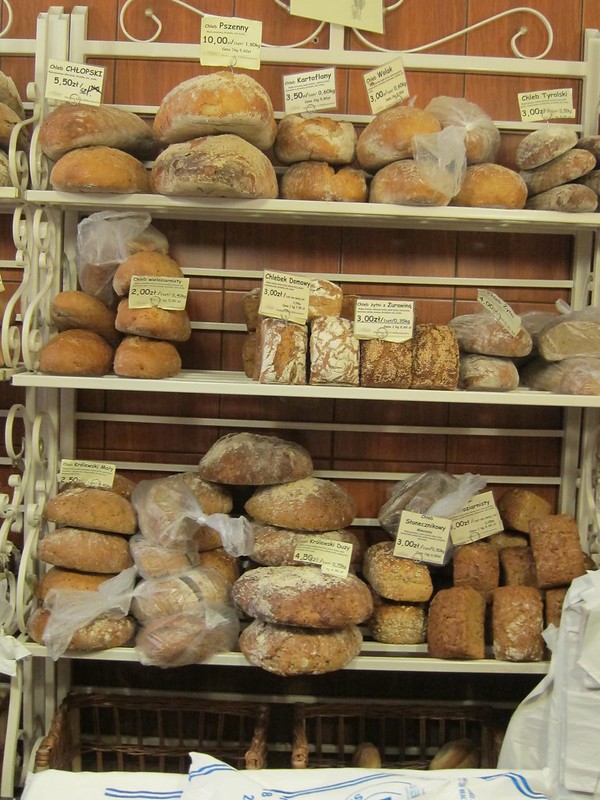
The white rolls (bułki) we had for śnadanie were light and crackly, and the darker breads heavier and excellent with things like pasztet, a baked Polish pâté.
I didn’t come home with any particular loaves that I felt like I had to reproduce, more just a general sense that I should branch out and try a few more formulas with nuts, grains, or more spelt and rye in them. I don’t think I’ll regret it!
Wódka
No profile of Polish food and drink would be complete without mentioning wódka (vodka). We actually didn’t have any straight wódka on this trip or witness any heavy drinking, though we did notice a number of 24 hour liquor stores. Rather we had many toasts and after-dinner cordials, some homemade such as a red current and a nut one, and others purchased such as Soplica flavoured with hazelnut or cherries, Krupnik flavoured with honey and which I had with hot water and lemon, or my wife’s favourite “old lady vodka” Avocaat, which I gather is actually of Dutch origin but which is popular with ladies of a certain age in Poland as well. Kogel mogel is another name for a thick, sweet egg cordial (which can be made with or without the liquor) like this too.
A couple of regional foods worth noting.
Obwarzanki Krakowskie
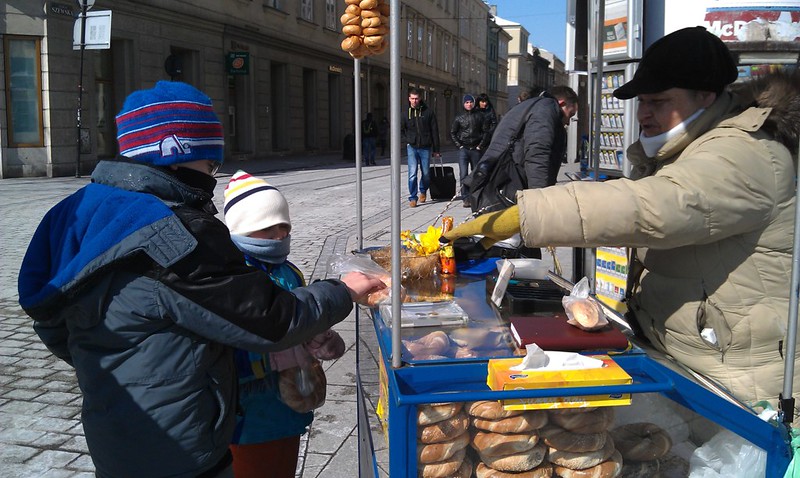
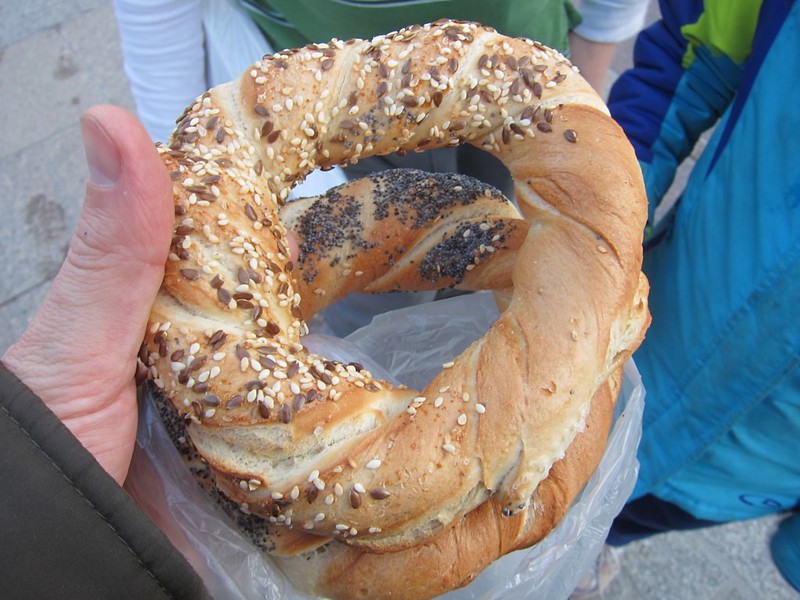
Obwarzanki Krakowskie are a close relative of, some say precursor of, the bagel. Sold by street vendors all over Kraków, they are reputed to go back nearly 700 years. Priced at 1.5 złoty (about 50 cents) a piece, they are a great snack to be able to grab when you are on the go.
Oscypki
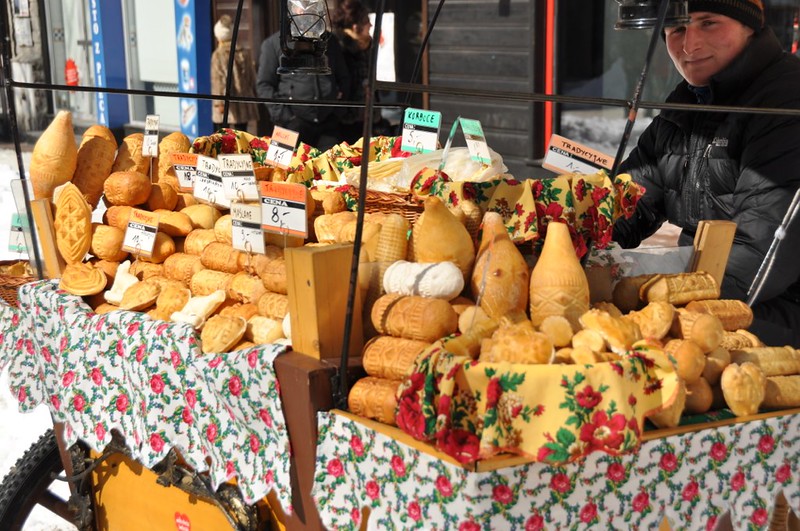

During our stay in Kraków there was an Easter market happening in the main square. We tried a bunch of regional sausages and breads there, but by far our favourite snack were the grilled oscypki, a smoked sheep’s milk cheese made in the Tatra mountains, served hot with lingonberry jam. The oscypki are a regional specialty found year-round in Zakopane - a hard cheese with a salty flavor something like a cross between gouda and mozzarella, only smokier. They are usually pressed into lovely decorated moulds giving them a distinctive appearance though we also had them in strings which are sometimes braided or even pressed into animal shapes. The grilled version appears to be a fairly new invention which was particularly tasty given the cold weather we were experiencing.
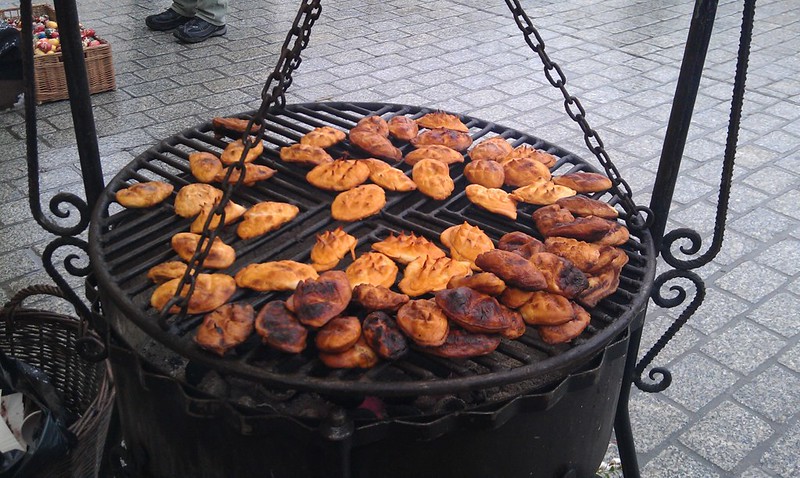
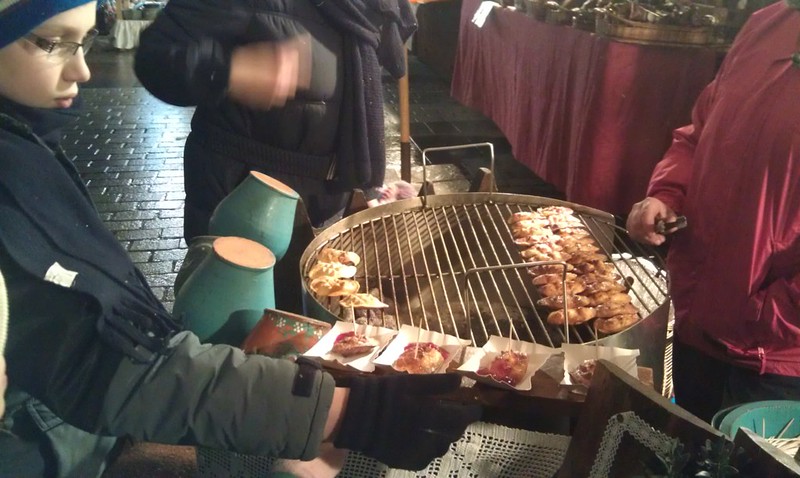
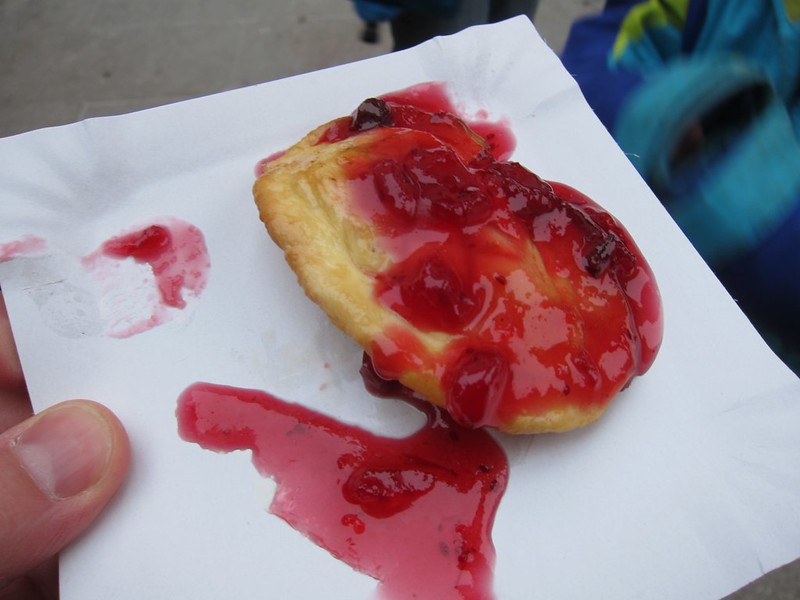
Zapiekanki

Zapiekanki are like Polish French bread pizzas and are a very common late night street (drinking) food. Our favorite and the most popular kind is topped with mushrooms, cheese, and ketchup, and sometimes with chopped leeks and chives. There are other varieties to be found also, such as the “Hawaiian” ham and cheese and pineapple, or salami, or the Greek with olives and feta, and other versions that include red bell peppers, sausage, yellow cheese, and pickles.
Bar Mleczny

Bar Mleczny are milk bars that spread around Poland back in the Communist era. Subsidized by the government, Bar Mleczny were inexpensive cafeteria that serve Polish standards like barszcz and pierogi at extraordinarily low price. Originally created to distribute excess milk products, they expanded to include standard regional dishes and have a reputation for being one of the better places outside of local “homes” to find traditional dumplings and pancake style dishes.
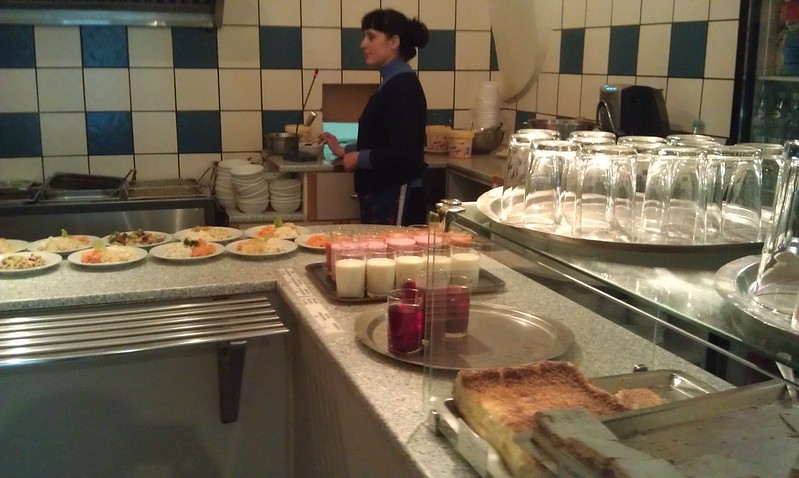
I gather Bar Mleczny can be hit-or-miss, with some being downright nasty and the service being notoriously bad, but the one we ate in a bunch of times was very good and the staff, while perhaps not friendly by Western “Hi, I’m Tammy and I’ll be your server this evening” standards, was courteous and friendly enough. One day they even made a special batch of the kluski śląskie my wife had been asking about, which was pretty nice of them.
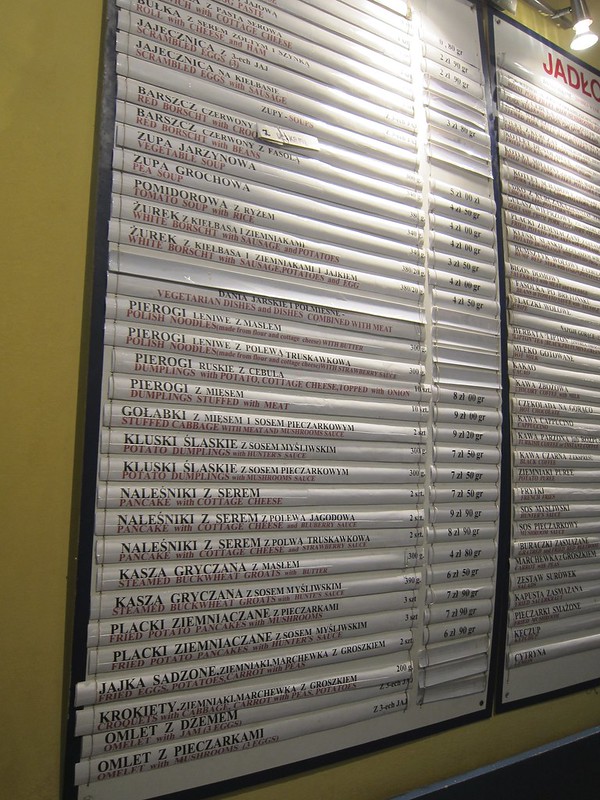
Privately I harbour the dream of someday opening a restaurant called Bar Mleczny here. It probably wouldn't last long without the subsidies and what with people's expectation of customer service, but... man, are they good.
I could go on and on but I'll spare you. But one final thing worth knowing: Smacznego! That is the Polish equivalent of “Bon appetit.”
Smacznego!